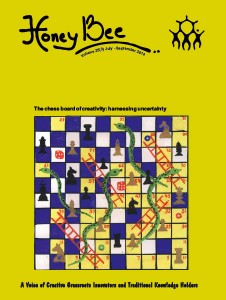
 There is a very strong urge among young parents to put their children in different kinds of school right from 2-3 years. The notion is that if children don’t start early, they might be left behind. But left behind in what? In competing with other similar children, will be the often repeated answer. You can only compete with others of your like. Assume for a minute that your child is supposed to be a genius, an outstanding artist, singer, dancer, sculptor, mathematician or a writer, story teller, scientist, technologist, or actor may be. There is a very little chance he/she will find enough challenge in a small group of 30 kids that you have decided him to grow with. What should one do then? School at home, may be.
There is a very strong urge among young parents to put their children in different kinds of school right from 2-3 years. The notion is that if children don’t start early, they might be left behind. But left behind in what? In competing with other similar children, will be the often repeated answer. You can only compete with others of your like. Assume for a minute that your child is supposed to be a genius, an outstanding artist, singer, dancer, sculptor, mathematician or a writer, story teller, scientist, technologist, or actor may be. There is a very little chance he/she will find enough challenge in a small group of 30 kids that you have decided him to grow with. What should one do then? School at home, may be.
Anu: look at my drawing, ma.
Ma: you have made eyes in this face so big, how can that be?
Anu: but they are big eyes, I know.
Ma: but look at your eyes, these are not so big?
Anu: this is not my face, this is the face of my friend, you don’t know him
The discussion can go on. Mother may succeed in training this kid, enough after a while, with the help of her teachers to paint stereotypical faces, houses, mountain and sun and a river-a typical scenery that 90 per cent children learn to make in pre-school. I remember a visit to a local school some years ago on their annual day. I requested principal, anita dua to let children paint anything they wish, no matter how weird. My condition was I will like to meet such children and if needed, invite them and hug them on stage if I like weirdness. My day was made when I went there. A kid said, he has decided to be an entrepreneur. He has already invented his special dish. It is called Chilshu, the sugar and chilli mixed together. Another said, he wanted all the buildings in his city to be curved, he did not like straight matchbox kind of buildings. He also wanted water canals to flow through the lanes. These children had learned to imagine. By reinforcing uniform set of KG books, typical art, same nursery rhymes, and similar concepts of what it means to be bright, we are really killing the seed of creativity and innovative potential in them. Is it surprising that children then get stressed so quickly on such trivial matters? Recently, on the cover of Honey Bee Newsletter, we had a picture having a blend of chess board and snake and ladder game. The chess implies a skill or strategy based game, one could by practice and training, master it. But in snake and ladder, a dice game, there is no possibility of mastery. One does not know what will be the number on the dice every time one rolls it. Complete serendipity, or randomization. One cannot excel in it. But one can excel in dealing with its consequences. One can enjoy ones vulnerability. One can learn equanimity. It is not for nothing that a majority of the games our elders taught us in our childhood were randomization games. We need a combination of strategy and randomization in life.
I hope that at least some parents will be persuaded to let children learn their own way. More seemingly absurd things they imagine, more connections may get built in their brains among parts which normally don’t communicate with each other. That’s why Sukumar Roy wrote Abol Tabol, a book of absurd poetry in Bengal, more than hundred years ago. Not many schools use this book as a primer for pre-school children. If you wish your children to develop new ways of classifying thing, framing original questions, seeing multiple patterns in the same set of information, then let them learn to think, act, imagine, classify and abstract. Don’t fill them with mediocre content, help them see the bigger context- a context which may surprise you. If it does not, then you are not doing a good job of letting children be, hands off.

Very essential thoughts sir. ‘We need a combination of strategy and randomization in life’ is true for all.
Just beautiful thoughts. What is the secret to these thoughts?